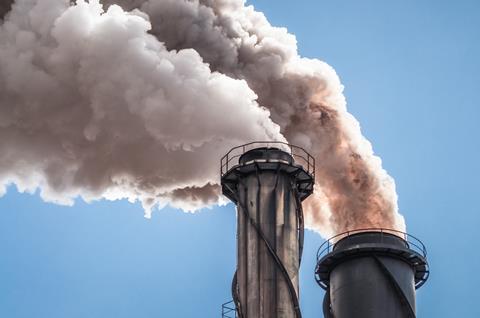Government is consulting on plans to prevent ‘carbon leakage’, as well as extending emissions trading scheme to 2050
The UK government intends to introduce tariffs on carbon intensive products such as fertiliser and cement from countries that have a lower carbon price than the UK. The carbon border adjustment mechanism (CBAM) would come into force in 2027 and aims to reduce the risk of ‘carbon leakage’ , whereby production (and the associated emissions) move overseas to countries with less stringent climate polices.

The EU has already begun a monitoring phase ahead of introducing its own CBAM, a year earlier, in 2026. UK companies exporting goods such as hydrogen, cement and steel to the EU will have to provide emissions data on their products to their EU customers.
The UK Treasury said it didn’t anticipate the year’s delay would mean carbon intensive products would be re-directed to the UK, but that the risk carbon leakage is expected to increase from 2028 onwards (by which time the UK system should be operational).
The Chemical Industries Association has welcomed the UK announcement but says it’s ‘disappointed that we’re still playing catch up with the EU and we still have very few details.’
The UK announcement came alongside changes to the country’s Emissions Trading Scheme (ETS) coming into force this month, which lower the cap on emissions in line with the reductions needed to reach net zero. The number of allowances companies can buy will fall by 12% this year, and by 45% by 2027, compared to 2023. The ETS is also being extended from 2030 to 2050.
In 2025, emissions from venting carbon dioxide by the oil and gas exploration and drilling sector will be included under the ETS, expected to amount to around 400,000 tonnes. The government also intends to include methane and nitrogen oxide emissions from the sector, but there’s no timetable.
It is also consulting on how it allocates free allowances to industry, to encourage further decarbonisation. Certain industrial sectors get free allowances to protect them from carbon leakage. The government is exploring aligning free allocations with actual activity, which could avoid situations where a facility is closed, but the site operator is still able to obtain allowances it can sell. This happened in 2022, when CF Fertilisers was awarded over 400,000 allowances (worth over £30 million) for a plant in Cheshire that it closed.
Industries want to see a close match between a UK and EU CBAM and have called for linkage of the two emissions trading schemes. The UK government says it’s open to the possibility. Although prices on both the EU and UK ETS have fallen since mid 2023, the UK price is trading around 30% lower. If maintained, that would mean UK companies paying a carbon tax to export to the EU.
Linking the two systems would potentially avoid the burden of reporting. Alan Winters, co-director of the Centre for Inclusive Trade Policy at the University of Sussex, UK, points out that while companies are already gathering emissions data, they’ll have to report emissions by product rather than at company level. This could be more onerous for small exporters.

















No comments yet